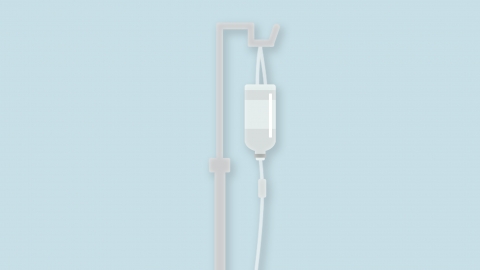What to do if the vein becomes hardened after receiving an intravenous injection
Generally, hardening of the vein after intravenous infusion may be caused by repeated puncture irritation, rapid infusion speed, medication irritation, phlebitis, or thrombosis. It is recommended to seek timely medical attention, identify the underlying cause, and follow a physician's guidance for improvement through local care and medication treatments. Detailed explanations are as follows:

1. Repeated puncture irritation: Multiple punctures at the same site can damage the blood vessel walls, leading to vessel contraction and hardening, often accompanied by mild local pain. Immediately switch to another puncture site to avoid further irritation. Apply a warm compress to the affected area for 15 minutes per session, three times daily, to promote vessel softening and relieve discomfort.
2. Rapid infusion speed: Infusing large volumes of fluid too quickly increases pressure on the vessel walls, potentially causing vascular spasm and hardening, sometimes accompanied by localized swelling. Inform medical staff promptly to adjust the infusion rate to 40-60 drops per minute. Elevate the limb on the puncture side for 15-30 minutes after infusion to promote blood return and reduce vascular pressure.
3. Medication-induced vascular irritation: Infusion of high-concentration or irritating drugs can damage the vascular endothelium, causing vessel hardening and redness. When hardening occurs, apply medications such as mucopolysaccharide polysulfate cream, heparin sodium cream, or diclofenac diethylamine gel as directed by a physician to alleviate vascular irritation.
4. Phlebitis: Bacterial infection at the puncture site or drug-induced inflammation can cause vein inflammation, resulting in hardened vessels accompanied by redness, swelling, pain, and palpable cord-like indurations. Patients should follow medical advice to use antibiotics such as cefuroxime axetil tablets, amoxicillin-clavulanate potassium tablets, or levofloxacin tablets for anti-infective treatment.
5. Thrombosis: Blood clotting following vascular injury can lead to thrombus formation, causing vessel hardening accompanied by local pain and limb swelling. Under medical supervision, use anticoagulant and thrombolytic medications such as low molecular weight heparin calcium injection, warfarin sodium tablets, or rivaroxaban tablets.
Maintain cleanliness and dryness at the puncture site to prevent infection and avoid contact with water. Refrain from pressing or rubbing the hardened vessel area and wear loose clothing to minimize local friction. Comprehensive care and treatment will help restore vascular function and reduce complications.






